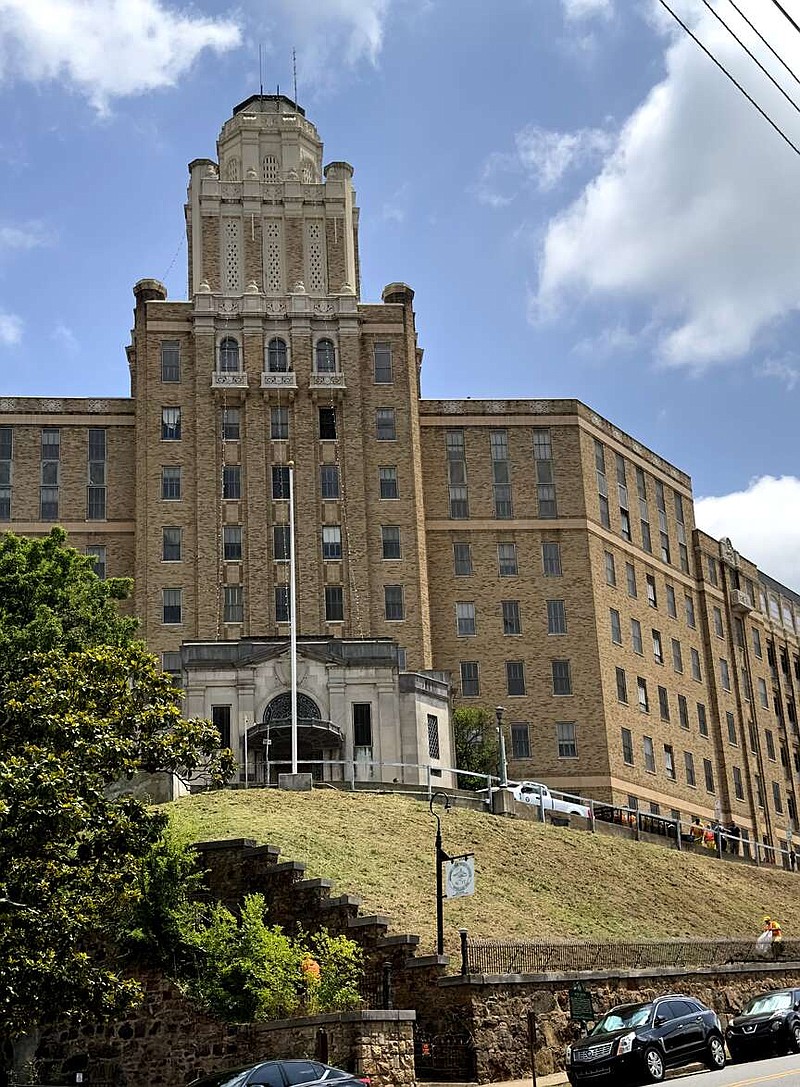HOT SPRINGS -- U.S. Department of Defense officials toured the shuttered Army and Navy General Hospital earlier this month ahead of the report they are required to give Congress on the cost of remediating environmental liabilities at the orphaned property.
The report is due next month, or 120 days from the passage of the National Defense Authorization Act. Signed into law in December, the legislation comprises close to $900 billion in spending for the fiscal year that ends in September.
It included U.S. Rep. Bruce Westerman's amendment for up to $2.75 million in grants the state can apply for to secure the building and pay for fire suppression.
The Hot Springs Republican's office noted the money is contingent on passage of the Department of Defense's fiscal year 2024 appropriation. Stopgap funding for the appropriation and five other spending bills expires today.
"The Office of Local Defense Community Cooperation scheduled the site visit to assess the property and converse with the state and local officials and community stakeholders," Westerman's office said earlier this week.
Westerman's amendment requires the Army to brief Congress.
"This briefing will provide valuable information regarding the property and will help shape conversations for future use," his office said.
The office said the Defense Department intends to seek a legal opinion on ownership of the property, which has been unsettled since the state ended the residential job training program for young adults with disabilities the campus had hosted since 1960.
The state expected the federal government to step in after the program ended in 2019, as language in the 1959 statute that gave the property to the state requires the title to immediately revert to the Army if the building isn't being used for health or education. Last year the state told The Sentinel-Record the Army was using "bureaucratic red tape" as an excuse for not taking ownership.
But Westerman's amendment created a framework for the state to retain ownership if certain conditions are met, including the Army developing a plan to qualify the property for grants under the state's brownfields program. The report due next month is expected to outline the necessary steps.
It will also identify who could potentially be responsible for environmental liabilities the property accrued over the last century.
Westerman's office said the U.S. Army Corps of Engineers completed the second phase of its environmental assessment in September. The initial study completed in 2019 revealed possible soil contamination from storage drums and underground fuel bunkers, contaminants local leaders said could leach into the area where groundwater mixes with thermal water that rises from Hot Springs National Park's namesake springs.
Left unprotected for almost two years after the state departed, the building and its 20-acre campus were exploited by vandals and squatters. The state contracted Allied Universal Security Services for around-the-clock security in 2022.
The contract was extended through May of this year for $223,684 and can be renewed annually through May of 2029, according to a copy the state provided last year in response to a records request.
The state has said it costs about $30,000 a month to secure the campus and pay for utilities at the 200,000-square-foot building. The Mission/Spanish-style building opened in 1933. It's been on the National Register of Historic Places since 2007 and Preserve Arkansas' list of Most Endangered Places since 2020.

